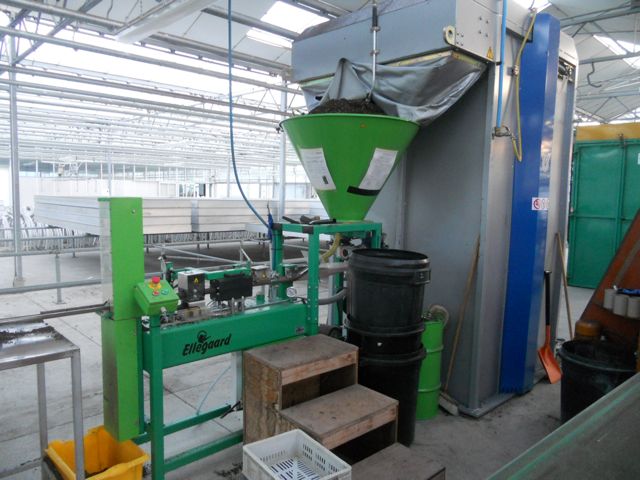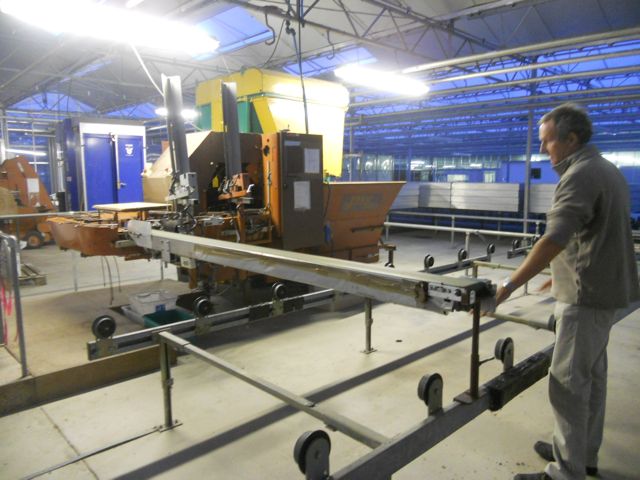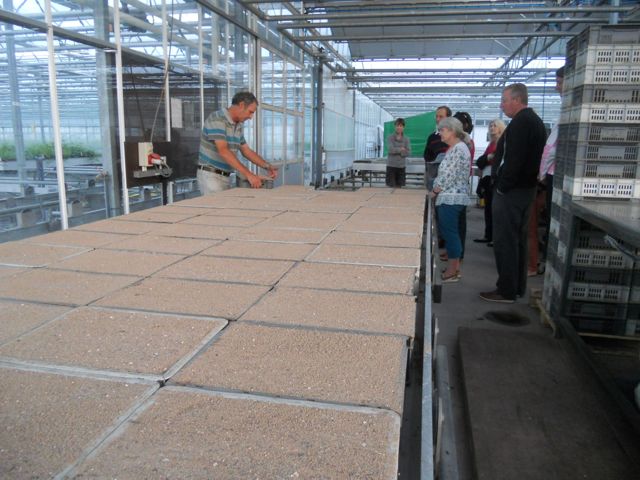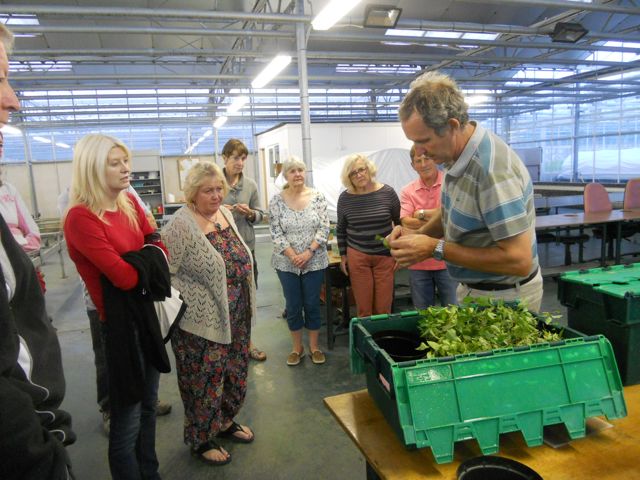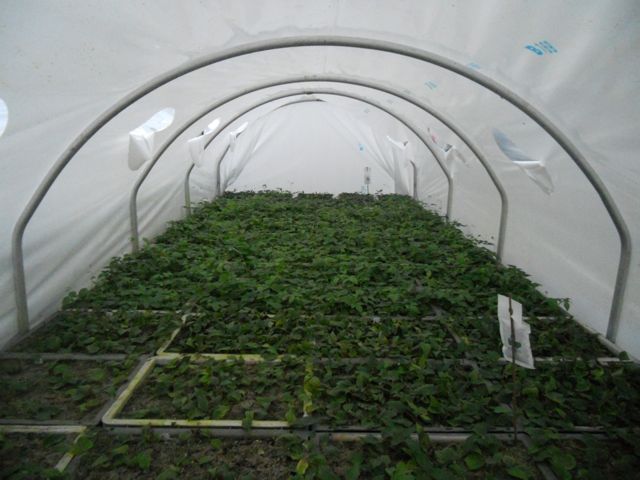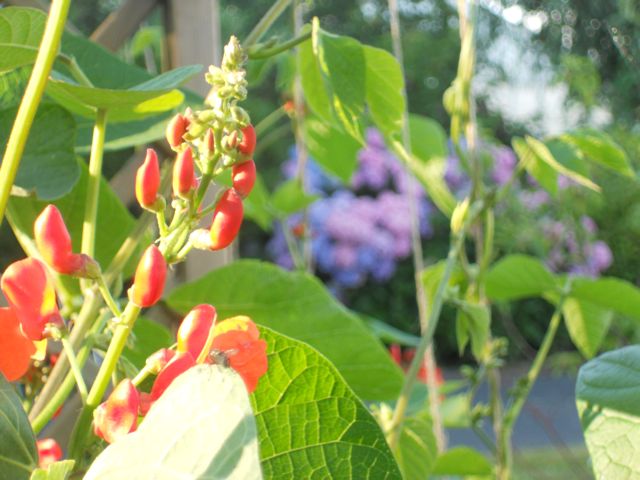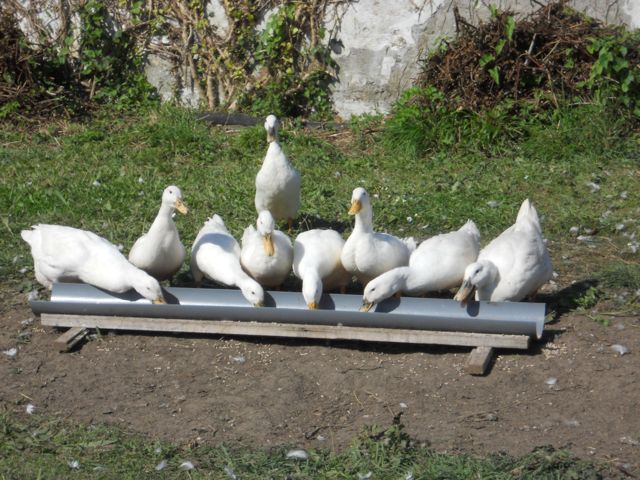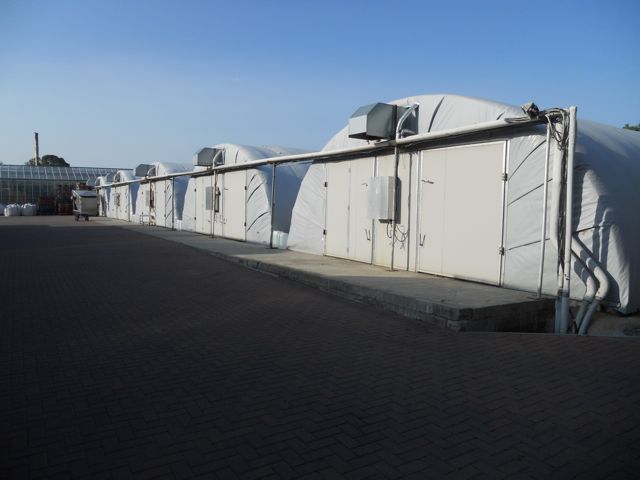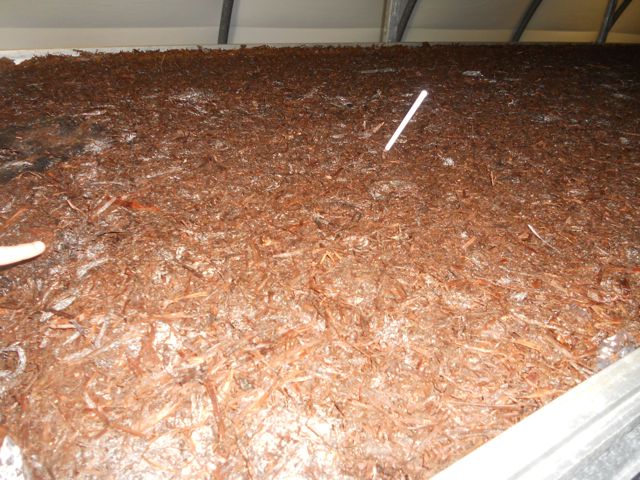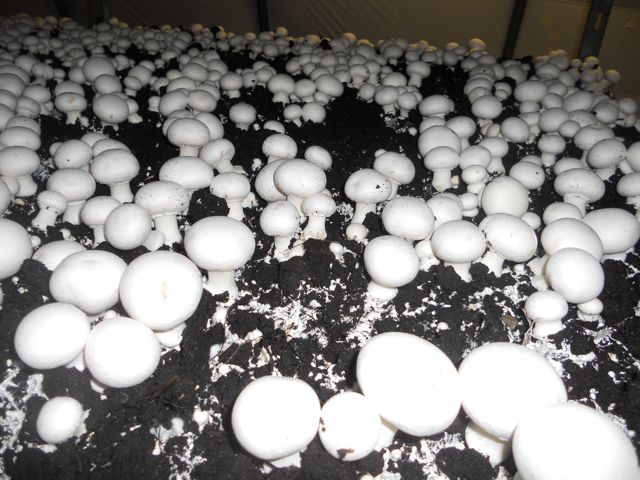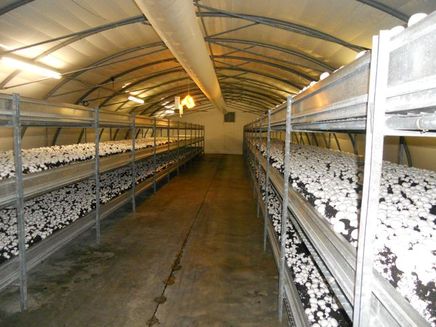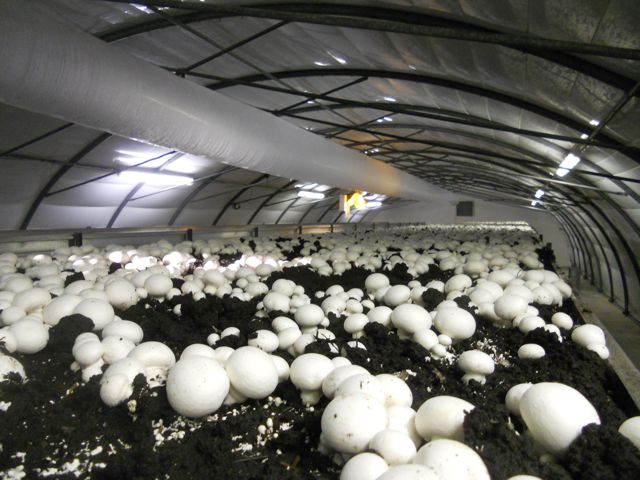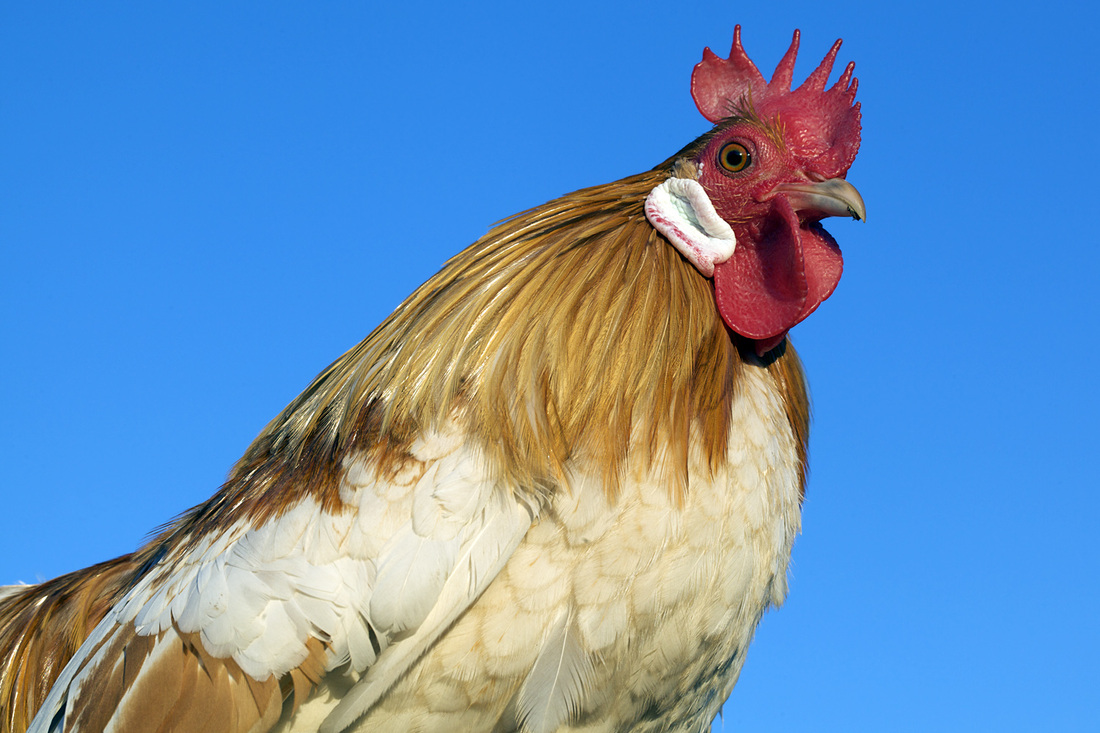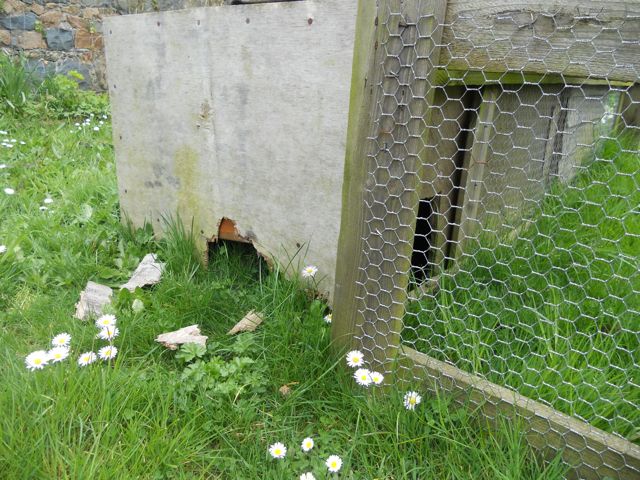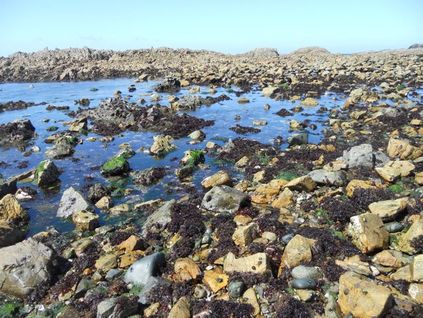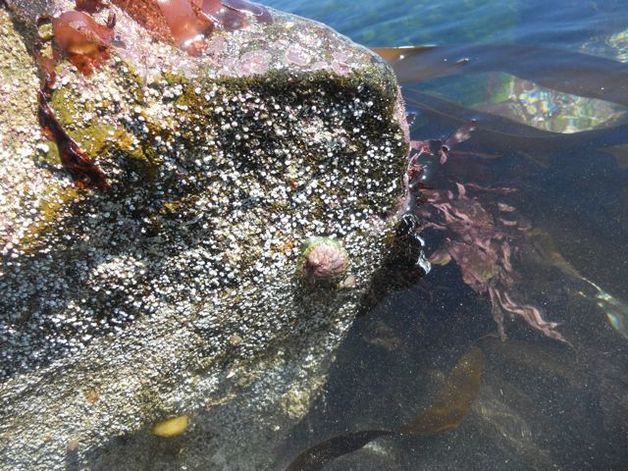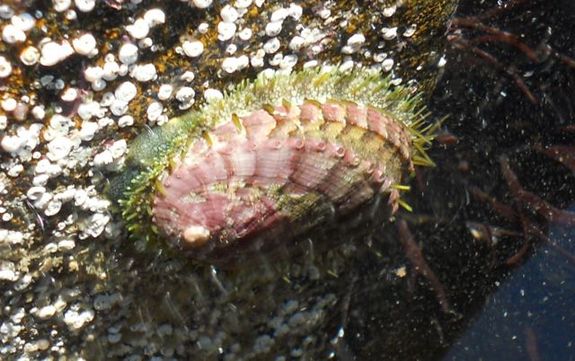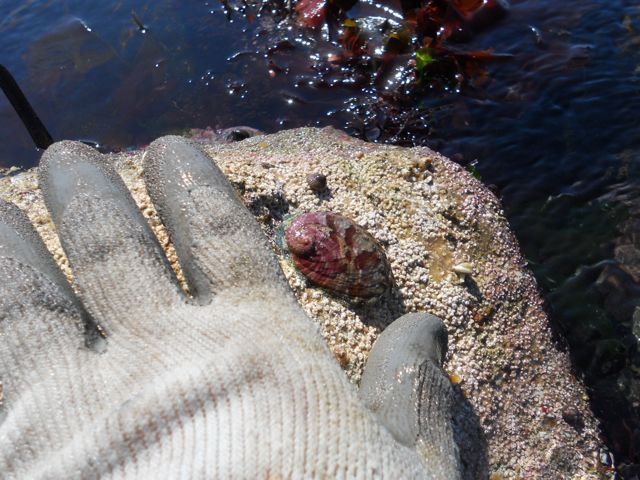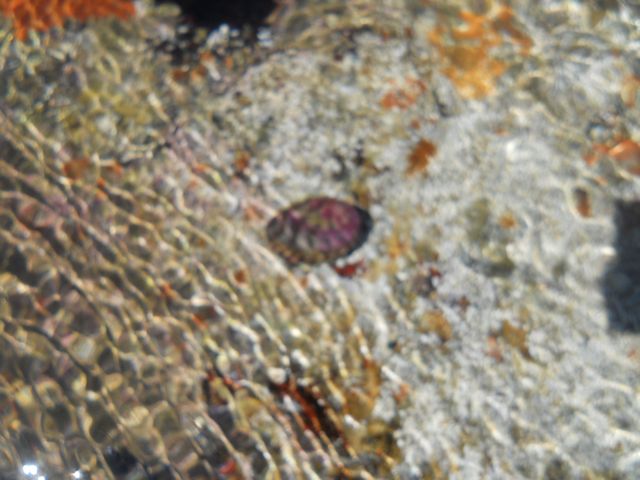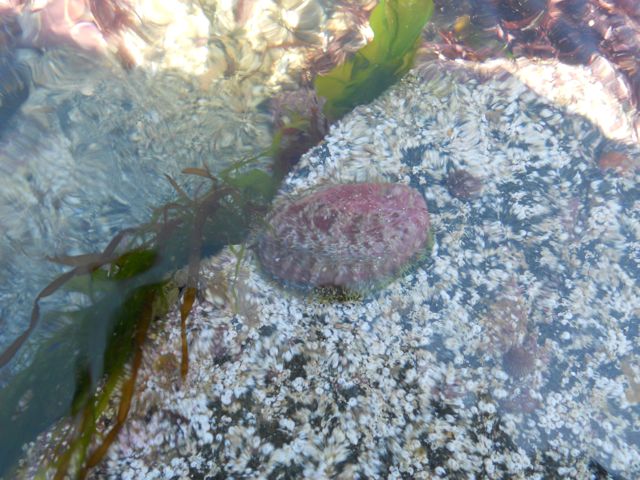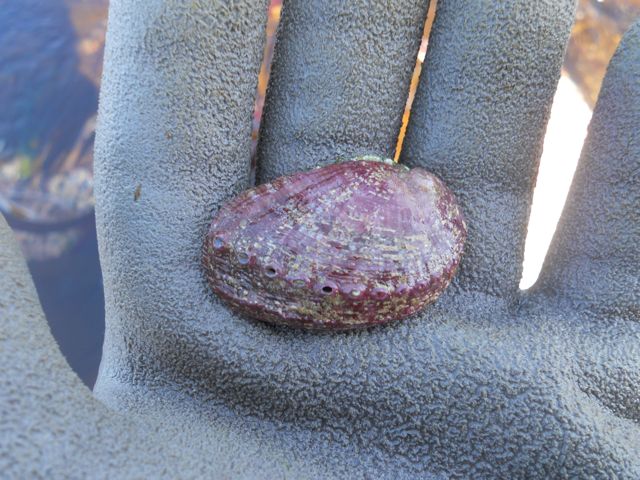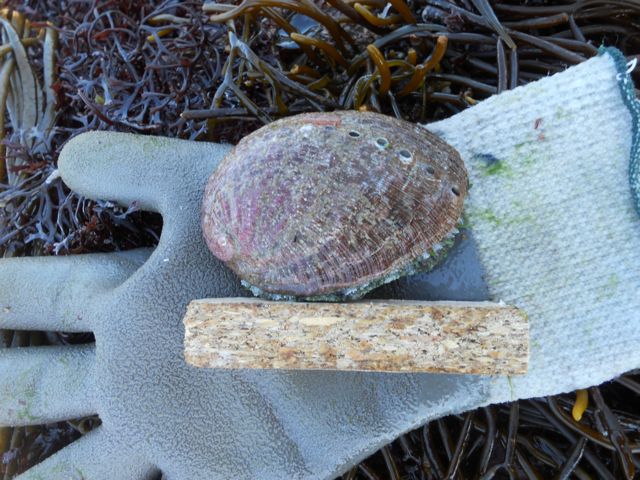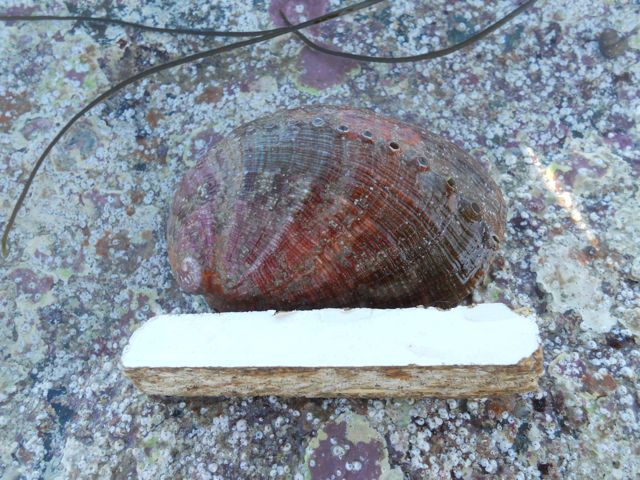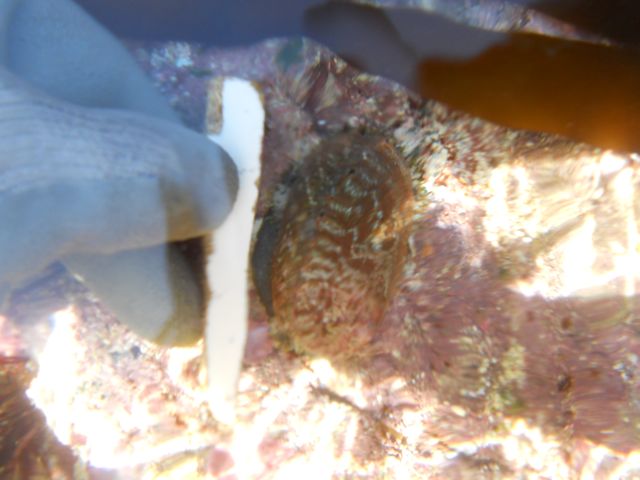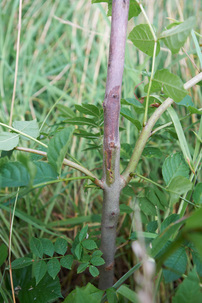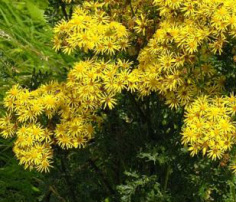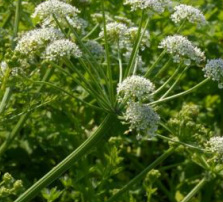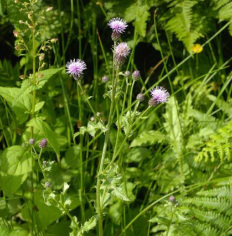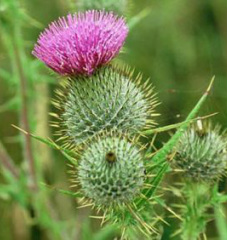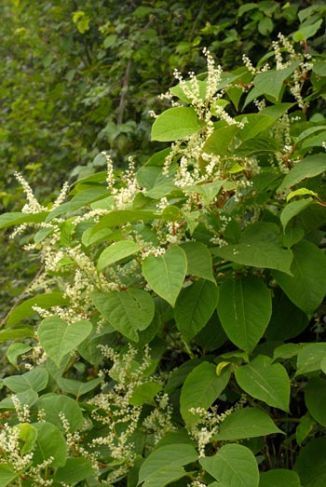Visit to Guernsey Clematis Nursery
Not to be missed, a tour of The Guernsey Clematis Nursery was on offer for 28 August 2013 and several smallholders took up the opportunity to be shown round by technical manager Alan Dorey.
Guernsey Clematis has been here since 1984, after a disastrous frost in their former home in the UK prompted a move to our warm granite. The business has developed over the years and can now produce 3 million cuttings a year, exporting all round the world. There are over eight acres of glass divided between two main sites, with computers controlling the temperature, humidity and light, and a highly mechanised system of preparing the compost trays and moving the wheeled waist-height work stages around the glasshouses.
Guernsey Clematis has been here since 1984, after a disastrous frost in their former home in the UK prompted a move to our warm granite. The business has developed over the years and can now produce 3 million cuttings a year, exporting all round the world. There are over eight acres of glass divided between two main sites, with computers controlling the temperature, humidity and light, and a highly mechanised system of preparing the compost trays and moving the wheeled waist-height work stages around the glasshouses.
|
The cuttings are rooted in trays of compost finished with a layer of sand to restrict the growth of moss, or in small plugs of compost, depending on where they are going and how they will be transported. The cutting material is prepared by some skilled ladies in the 35-strong workforce, dipped in rooting compound and placed in large aluminium work stages under a polythene tent.
|
|
Each nursey tent has biological control bugs in with the cuttings and over several weeks larger and larger holes are made in the polythene cover, until the roots have started and the plants are able to handle the environment in the large glasshouse.
If the cuttings are to be sent to the USA, all the soil and foliage has to be removed to comply with import restrictions. |
Otherwise, the cuttings are transferred to individual pots for growing on for export to other markets.
All the water used at the site is channelled from the glasshouse gutters into a half-acre resevoir, filtered and fertilised. After use for watering, the run-off is saved and filtered again, and goes back round the system |
Another excellent visit. You should come next time.
Visit to Herm
A bright and sunny evening on 16 August 2013, a short hop on the Trident and we're in Herm, being shown round the gardens by Assistant Gardener, Rosie Wheeler.
The tour started on the lawns of the White House Hotel, which has hot, dry borders and is perfect for the many subtropical plants. Pine needles from the trees planted to provide shelter from the Westerly winds make the soil slightly acidic, which suits the many Hydrangeas.
The tour started on the lawns of the White House Hotel, which has hot, dry borders and is perfect for the many subtropical plants. Pine needles from the trees planted to provide shelter from the Westerly winds make the soil slightly acidic, which suits the many Hydrangeas.
|
In front of the hotel a 24 year old Canary Palm (Phoenix Canariensis) dominates the small border - it has to be regularly trimmed so the residents can see out of the windows, and also has to be tied up in the winter.
A range Proteas and other South African plants grow well on the bank above the Hotel swimming pool as the granite in the soil retains the heat from the sun keeping the roots warm overnight. The tour then took us to the valley field, half way up the main hill. Around five years ago Head Gardener Brett Moore started transforming the area, with new plants added to the borders each year, such as tree ferns and Gunneras. Staff from Lloyds TSB helped to sow the wildflower meadow, which, together with the bug hotels attract diverse wildlife to the valley. |
|
Arriving at St Tugual's Chapel at the top of the hill, Rosie showed us the recently renovated garden, where some of the plants are only two years old. Her first task as new Assistant Gardener was to tame the overgrown garden, where she revealed some climbing roses hidden under thick ivy. She transformed the area into a white garden, matching the white bedding always used outside the chapel doorway.
Outside the church is the The Manor courtyard, where lots of yellow flowers such as Dahlias and the black and yellow 'Banoffee Pie' Petunias make the granite courtyard much more bright and colourful. There are also vegetables and herbs mixed into the borders and displays so that the self-catering guests can help themselves.
What a delightful tour. Winning gold in both Floral Guernsey and Britain in Bloom over the last few years, it is clear that Rosie and Brett know their gardening.
Have a look round the Herm Island website here - well worth a visit if you can't make it to the boat.
Outside the church is the The Manor courtyard, where lots of yellow flowers such as Dahlias and the black and yellow 'Banoffee Pie' Petunias make the granite courtyard much more bright and colourful. There are also vegetables and herbs mixed into the borders and displays so that the self-catering guests can help themselves.
What a delightful tour. Winning gold in both Floral Guernsey and Britain in Bloom over the last few years, it is clear that Rosie and Brett know their gardening.
Have a look round the Herm Island website here - well worth a visit if you can't make it to the boat.
Smallholder stories
|
Do you grow your own veg? Or keep animals for food? Are you interested in how others go about it?
Have a look at our Smallholder Stories for some short articles on keen like-minded people. If you would be happy to feature in this section, pease get in touch. |
Visit to Guernsey Mushroom Growers Ltd
On 12 July 2013 a small group of smallholders had the opportunity to see how Guernsey Mushroom Growers Ltd produce nearly all the local mushrooms supplied in the island supermarkets and stores. The proprietor, Wayne Billien was kind enough to give us a tour of the premises, which are made up of ten specially designed polytunnels, built with a double skin insulated by around six inches of soft mineral wool insulation - the original outer skin had to be replaced with a tough fabric material that could withstand the claws of seagulls. The insides of the tunnels are kept spotless, and the outside yard areas are immaculate, as it is vital to maintain strict hygiene when growing food to supply to the genreal public.
|
The polytunnels have a concrete base, with two rows of three-tier benches that hold the compost. Specially designed machinery enables the staff to load the compost from the bags in which it arrives from the UK, and then to disrupt the compost slightly as it has settled and compacted in the bags.
The temperature and humidity inside the buildings are regularly adjusted to make the conditions ideal for the mushrooms at the various stages of their development. The process starts with the special compost, made of straw and chicken manure, which has within it barley seeds impregnated with the mushroom spores. This base is watered and topped with a layer of peat compost, and the mycelium (the network of interwoven fibres that are the vegetative part of the mushroom) beigns to grow. |
Continued watering and careful regulation of the conditions produces the first crop, the "button" mushrooms, which are picked by the small team of seasonal workers employed at the farm. After a few more days the second crop, the "cap" mushrooms are gathered, and then lastly the large "flat" mushrooms are picked. These three types of mushroom are all the same variety, but picked at different times as they grow. Wayne has found that the white mushrooms are favoured by shoppers, with very little demand for brown or more unusual mushrooms.
|
The compost is then cleared of any remnants, and a second "flush" of mushrooms grows, being picked again in three stages, following which a third and final "flush" develops - so each batch of impregnated compost will produce three rounds of mushroom crops.
The spent compost is then sprayed with a chemical that will prevent the remaining mushroom material from releasing spores, in order to reduce the potential for any disease to spread as the compost is taken from the building. The mushrooms that are not of good enough quality to satisfy customers are disposed of in a sealed container, again to reduce the risk of disease - this material is then taken to the green waste recycling facility at Chouet. |
The inside of the tunnel is washed thoroughly in preparation for the new batch of compost and the whole process starts again. Spent mushroom compost can be bought by the public from the farm on a thursday morning - this may well still produce mushrooms, depending on the conditions in which it is used by the gardener, but any mushrooms deveoping within the first fourteen days cannot be eaten, as there may still be traces of the sterilising chemical present.
This was a terrific visit. An impressive facility tucked away in the centre of the island, run by an experienced and enthusiastic team, efficiently producing Guernsey grown, high quality mushrooms.
This was a terrific visit. An impressive facility tucked away in the centre of the island, run by an experienced and enthusiastic team, efficiently producing Guernsey grown, high quality mushrooms.
Summer beach restrictions
Every summer, from 1 May to 30 September inclusive, various laws come into effect that regulate the way certain Guernsey and Herm beaches can be used. These laws restrict access by dogs, horses and vehicles and are aimed at reducing the nuisance that can be caused to people enjoying the quality beaches we have in the island.
Click here if you want to find out more.
Click here if you want to find out more.
Dogs left to roam by their owners
by Roger Burton
Following media stories in early 2013 of a stray dog repeatedly killing chickens in the Forest area of the island, there has been a lot of public comment about the possibility that the dog might be harmed in the process of its recapture, but very little reflection on the harm caused to domestic poultry by dogs that stray from their homes. This is not a rare event.
The article below is a personal piece written by Guernsey Smallholders member Roger Burton, who like most smallholders, is fond of dogs, but following an attack within his enclosed garden he is keen to highlight the dangers posed when owners do not ensure their dogs are appropriately controlled. The attack was reported to the police, but there was not enough direct evidence to support a prosecution.
If you have any similar experiences, or have any views you would like to express, please let us know via our contact form on the Contact Us page, or by email to [email protected].
The article below is a personal piece written by Guernsey Smallholders member Roger Burton, who like most smallholders, is fond of dogs, but following an attack within his enclosed garden he is keen to highlight the dangers posed when owners do not ensure their dogs are appropriately controlled. The attack was reported to the police, but there was not enough direct evidence to support a prosecution.
If you have any similar experiences, or have any views you would like to express, please let us know via our contact form on the Contact Us page, or by email to [email protected].
|
Dogs have featured in the local and UK news recently for a variety of reasons. The one which I have enjoyed the most is Crufts and I try to watch the full coverage every year. Unfortunately not all the news items are pleasant to hear about, such as a girl in England killed by dogs that were in the kitchen of her friend's home. These features are clearly at opposite ends of the good/bad news spectrum. However, there are lots of other incidents, albeit less sensational, being reported and locally these have included a dog mauling another dog, dogs biting and chasing sheep at Pleinmont and mauling chickens, and a rescue dog called Slygo which escaped and became feral living off poultry it found in the Forest parish area. I have been advised that many of the 'incidents' with dogs do not get reported in the local Press.
|
In the case of the now safely captured Slygo, the dean of the Forest douzaine had considered the option of having a police marksman shoot the dog because of the harm it could cause to other animals. This was met by a backlash from angered islanders and even the GSPCA was reported as wanting to reassure the public that shooting the dog was not an option. It seems Slygo's rights were more important than those of the creatures it had encountered. I doubt that many of the angered public have seen for themselves the manner in which a hunting dog kills poultry or, worse still, leaves some alive but with horrendous injuries.
I bought Le Briquet Farm in St. Saviour's in 2001 thinking that the property was perfect for rearing livestock including sheep, steers, ducks and chickens. My interest in poultry goes back many years and I keep them for a fresh egg supply (they are so much better than shop bought eggs) and for exhibition purposes.
I bought Le Briquet Farm in St. Saviour's in 2001 thinking that the property was perfect for rearing livestock including sheep, steers, ducks and chickens. My interest in poultry goes back many years and I keep them for a fresh egg supply (they are so much better than shop bought eggs) and for exhibition purposes.
|
Since 2001 I have had dogs visit my property and kill my chickens on three separate occasions, with the most recent being in late February this year. The attack this year was again carried out by terriers and the owners admit that their terriers were roaming on the day in question. A neighbour recognised the dogs and chased them off her property on the day of the attack as she was concerned about her free range chickens.
One of the dogs freely roams about the neighbourhood and visits the other, which it sometimes is able to free from wherever it is kept. This second terrier had killed chickens before and will obviously look to do so again if given the chance. Within 24 hours of the frenzied attack one of my ewes kept nearby gave birth to a small lamb. Of course there is no firm proof that the dog attack caused an early birth. |
My losses have been considerable as many of the chickens have been exhibition quality and, in some cases, were one of the two rarest breeds in the UK and were registered with the Rare Breeds Survival Trust. Replacement of good quality exhibition stock is difficult and expensive.
There is little that I can do about the two terriers. Convictions are rare because the dogs have to be caught in the act (strong circumstantial evidence is often insufficient) and the offence of 'allowing a mischevious dog to roam' was removed from local law some years ago. As the laws stand in Guernsey it appears that without any offence of allowing a dog to roam I cannot restock my farm with poultry for fear that it will be just a few years before the same dogs, or others, make another unwelcome visit.
This situation is surely unfair. I, for one, would welcome the addition of such an offence and believe that it is well overdue.
I welcome any comments on this suggestion and also information regarding attacks by dogs that others have experienced. It would be useful to know the extent of this problem.
There is little that I can do about the two terriers. Convictions are rare because the dogs have to be caught in the act (strong circumstantial evidence is often insufficient) and the offence of 'allowing a mischevious dog to roam' was removed from local law some years ago. As the laws stand in Guernsey it appears that without any offence of allowing a dog to roam I cannot restock my farm with poultry for fear that it will be just a few years before the same dogs, or others, make another unwelcome visit.
This situation is surely unfair. I, for one, would welcome the addition of such an offence and believe that it is well overdue.
I welcome any comments on this suggestion and also information regarding attacks by dogs that others have experienced. It would be useful to know the extent of this problem.
Where's that?
Fancy a little test of your local knowledge? If you regularly stroll through your favourite Ruettes Tranquilles, do you think you would be able to recognise them in a photograph?
Over the course of the year we posted up two pictures each month from February to November, two from each of the ten parishes, amounting to twenty pictures in all - see if you can figure out where they are.
When you're stuck, the answers are here.
Over the course of the year we posted up two pictures each month from February to November, two from each of the ten parishes, amounting to twenty pictures in all - see if you can figure out where they are.
When you're stuck, the answers are here.
Hover your mouse over the main picture to control the auto scroll, or click on the small pictures to enlarge them.
Last Ormering tides of 2013
End of April 2013 and your Roving Reporter takes the plunge as a novice Ormerer. Having read the States leaflet for 2013 tide times and useful info, and the Ormering code from Sea Fisheries, and with a little advice form his OrmerGuru, he heads down to Lihou Island to fulfil his hunter-gatherer urges.
|
What a glorious day! Pressure is high, swell is low, tide is not very low (OrmerGuru tells me you need a low of less than 0.5m to make it worthwhile, and today is 0.9m) but I'm not anticipating catching anything - I've not done this before and I just want to chat to a few gatherers, get the idea of how it goes, maybe speak to Sea Fisheries officers checking catches, and generally get the feel of this ancient Guern' activity.
So, pencil and notepad ready, camera charged, brand new waders in a bag with an old rusty Ormer hook inherited from Gran, I arrive at Lihou headland with an hour to go before low tide - apparently the trick is to get there early and follow the tide down. No-one around, but early yet I guess - I'm sure it's going to be packed before long, such a nice day and all. |
So I head off to the little island - my plan is to go round the back as I think that's where the Ormerers-in-the-know will be (the amateur punters won't bother to go that far, you see). First job when I arrive is to find a discreet place for a wee; Tip One - don't have two cups of tea before going Ormering. No-one around yet, but I'm sure they'll start arriving soon. It's getting quite warm now so I take off my woolly hat and within a few moments a seagull deposit just misses me; Tip Two - keep your hat on when around such rude company.
|
This looks like a good place - 45 minutes before low tide, but I'll get going so when people start arriving I'll be ahead of them. So, waders on. Clever idea, I put my shoes in a nice white bag-for-life on a high rock so I can keep my bearings, as I fancy I'll be moving around a bit and will forget where I've been; Tip Three - leave a visible landmark.
The thing is, when you turn over the rocks, you must turn them back again (check out YouTube and you'll see two young Guernseymen Ormering [you know who you are] and they DON'T turn the rocks back!! And they filmed it for all to see!!). But when you turn the rocks back you have to be careful not to squish anything underneath; Tip Four - brush aside any lurking critters before you gently roll the rock back. |
So I'm carefully replacing the rocks and I'm mentally prepared to find nothing at all. I start wondering - why isn't anyone else here? Have I got the right day? Should I have worn my glasses? How do you see through the water glare? Polaroid shades? Should I have not come on my own? What if I fall and twist my ankle? Will they be able to find me? Should I have worn a bright yellow cagoule?
I thought there'd be lots of people around so I wouldn't be alone, but here I am, an hour in, and I can't even see another human being, let alone another hunter-gatherer. But I've got my phone and I'm right opposite the Lihou house conservatory, so I'm sure I can direct Search and Rescue to find me.
The new waders are performing well (£19.99 worth of 100% waterproofness). I'm soaked up to the elbows and I'm actually enjoying this. It's not cold (shirt, jumper, sweatshirt, jacket, woolly hat) and I'm at one with the sea. And then - there it is!!
I thought there'd be lots of people around so I wouldn't be alone, but here I am, an hour in, and I can't even see another human being, let alone another hunter-gatherer. But I've got my phone and I'm right opposite the Lihou house conservatory, so I'm sure I can direct Search and Rescue to find me.
The new waders are performing well (£19.99 worth of 100% waterproofness). I'm soaked up to the elbows and I'm actually enjoying this. It's not cold (shirt, jumper, sweatshirt, jacket, woolly hat) and I'm at one with the sea. And then - there it is!!
Can you see it? There! Right in the middle! Four whole centimetres of Abalone.
Ok, here's an enlargement -
See all its fronds and things? I didn't know that's what they look like in the flesh. My first live Ormer! And it's too small to eat. They have to be at least 8 cm along the longest part before you can take them. But isn't it great? Then I find another one. And another. Within an hour, I find five Ormers, stuck under the rocks just like they said, but all too small. Here are the others -
What do you think? Neat eh?
Ok, I know, you've had hundreds and they've all been at least 30 cm long. But give a guy a break - first time, you know.
Well, did I give up? No! Look!
Ok, I know, you've had hundreds and they've all been at least 30 cm long. But give a guy a break - first time, you know.
Well, did I give up? No! Look!
My measuring stick is 9 cm long, so they're borderline; Tip Five - take a proper gauge thing to measure them with so you don't have any angst in your pants. I put them all back. While I'm all flushed with pride, fiddling with cameras and kelp, I realise I've lost Gran's Ormer hook. Disaster! Tip Six - tie the thing to your wrist with orange string.
Time to stop. I'm exhausted. Heaving rocks for two hours is tiring and I'm getting near the point when I fear I will topple over with a huge lump of granite trapping my foot and that will be that. Next time, I won't start so early. And I'll stop after an hour. Yes, there will be a next time. I've loved the experience and I'm prepared for the fact that the next time will be in January, freezing cold, but I'll be ready - towel, flask and a change of jumper in the car. And back to the homestead for a feed. All noble and puffed up.
So, OrmerGuru reckons I was the only one because everybody else knows that at the very end of the season, on a not very low tide, you're not going to get much. I can see that now. But, really? Not a single person? Not even you?
Time to stop. I'm exhausted. Heaving rocks for two hours is tiring and I'm getting near the point when I fear I will topple over with a huge lump of granite trapping my foot and that will be that. Next time, I won't start so early. And I'll stop after an hour. Yes, there will be a next time. I've loved the experience and I'm prepared for the fact that the next time will be in January, freezing cold, but I'll be ready - towel, flask and a change of jumper in the car. And back to the homestead for a feed. All noble and puffed up.
So, OrmerGuru reckons I was the only one because everybody else knows that at the very end of the season, on a not very low tide, you're not going to get much. I can see that now. But, really? Not a single person? Not even you?
Ash dieback diseaseThe official advice is that young infected trees should be destroyed, but older trees left alone for the time being, although they will probably die within 2-10 years.
Commerce and Employment imposed an indefinite ban on the importation of Ash trees in October 2012 and is surveying the island's trees, and the Plant Health Inspector has recently issued this press notice stating that the disease has been confirmed in the island in 86 young recently-imported plants, but the location has not been disclosed. |
Do you have any Ash trees on your land or nearby? Ash dieback disease, which causes leaf loss and crown dieback, and can lead to the death of young trees within a season, has been spreading across Europe - it appears to have been in the UK for two years now, and in Denmark, where it was first discovered 10 years ago, it is estimated that 90% of Ash trees are infected. The fungus that causes it infects during June to October, and shows dark blotches on the leaves within a couple of months - as it is a deciduous tree the infection may not be visible now until the spring. The fungus does not spread directly from tree to tree, but via spores in leaf litter being blown by the wind, so it is thought there will be spreading from June 2013. The Guernsey Press reports that many sites have been visited by staff of the Commerce and Employment Department looking for signs of the disease, and samples have been taken for testing. It is estimated that there are around 30,000 Ash trees in the island. If you are interested, have a listen to these two recent BBC articles; Best of Natural History explores the view that planting new forests all over the UK in recent years, rather than letting woodland expand in its own way has contributed to the loss of trees by disease, and More or Less, a stats programme that looks at the numbers in the news examines some of the figures being bandied around in reports on Ash dieback. Well worth a listen. See also the Forestry Commisssion's excellent guide for useful info. While we're on trees, have a look round the Guernsey Men of the Trees website. |
Illegal weeds
|
Did you know it's against the law to let four nasty weeds go to flower or seed on your land, for which you can be fined? They are Ragwort (shown top left - interestingly, there is some dispute over just how poisonous this plant is, and the most effective way to remove it); Hemlock Water Dropwort (pictured top right, found near water and said to be the most poisonous plant in Britain, but looks very similar to the edible Alexanders - its white parsnip-like tubers give it the nick-name "Dead Man's Fingers"), Spear Thistle (shown bottom right - not 'noxious' as such and spreads by seed, but can be controlled by cutting or pulling before flower); and Creeping Thistle (pictured bottom left - an aggressive weed that spreads by creeping roots and should be cut or pulled before flower). The States can enter your land (having given notice) and do what is needed to clear the weeds and send you the bill. So check out their helpful leaflet for guidance on identifying and removing them. The Garden Organic website also has excellent guidance on controlling the unwanted.
|
Thanks to Zoe Devlin for these pictures - check out her wonderful wildflower website here
|
Knotweed nightmaresMakes you shiver to think about it. This is the most invasive of weeds - once it has chosen you as its victim, it could be ten years of hard work before you get rid of it. You either pull it up or very carefully cut it in an effort to weaken the plant, or you use weedkiller.
The stems can grow to 10 ft and small pieces flung off by the strimmer or mower can root to produce new plants, so don't do that. The rhizomes can go down 10 ft and outwards 20 ft, and a piece half an inch long can produce a new plant. The official advice is that cut or pulled plants should first be thoroughly dried on a sheet of plastic and then burned or composted on site. The preferred method of combatting this weed in gardens is by use of Glyphosate, although this mustn't be used within 3 metres of any watercourse. Commercial contractors have other weedkiller options, but these aren't available to amateur gardeners. The Commerce and Employment Department have published this leaflet to help you. They also have this very useful guide to other plant pests and diseases. |
